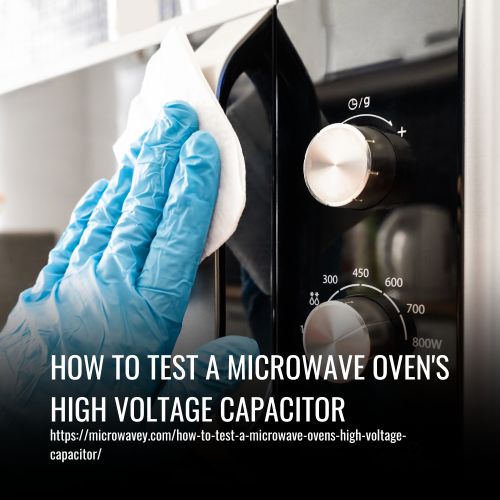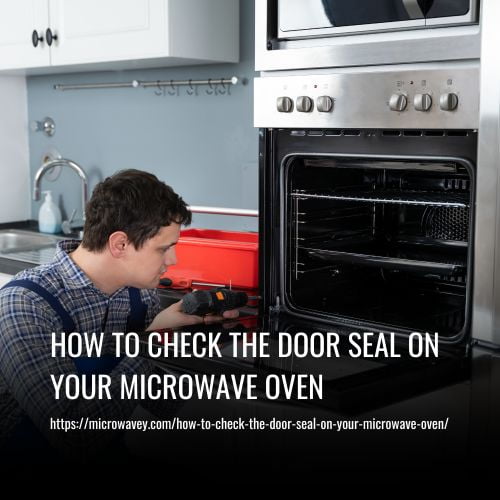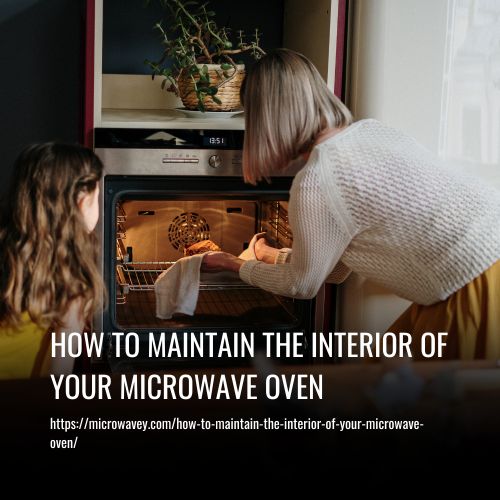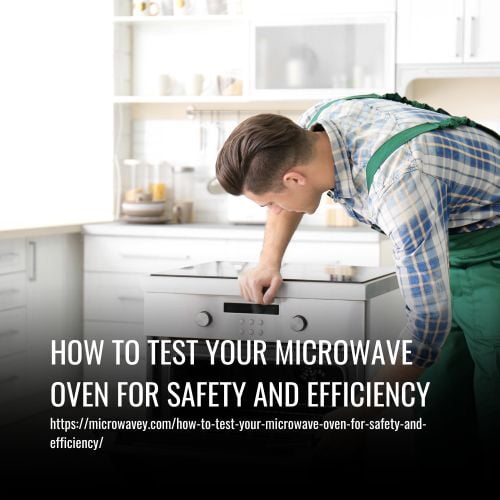How To Test A Microwave Oven’s High Voltage Capacitor
Over time, capacitors can wear out or become damaged due to usage – when this happens they can’t hold charge correctly, leading them fail their tests and causing other parts of the microwave oven to malfunction. A faulty capacitor can also cause serious electrical shocks, which makes proper testing essential before attempting any repairs on a microwave oven. So let’s get started!
To Test A Microwave Oven’s High Voltage Capacitor, follow these steps:
- Testing the Ability to Store and Release an Electrical Charge.
- Determining if the Capacitor has Shifted.
- Measuring the Capacitance Rating.

Test a Microwave Capacitor:
Microwave ovens use a high voltage capacitor to store electrical energy that is used to power the magnetron, which generates the microwaves that cook your food. It is important to make sure the capacitor is functioning properly for your microwave oven to work effectively and safely. Here are some steps on how to test a microwave oven high voltage capacitor:
1. Testing the Ability to Store and Release an Electrical Charge:
- Disconnect and calibrate: Disconnect the wires from the capacitor terminals and calibrate the analog-style ohm meter by setting it to 1,000 ohms or higher.
- Test the terminals: Connect one meter lead to each capacitor terminal. The meter’s needle should initially deflect toward zero ohms and then return to infinite resistance. Repeat the test with the leads reversed.
- Check for movement: If the needle does not move or stays near zero ohms, the capacitor is faulty and unable to store and release an electrical charge.
2. Determining if the Capacitor has Shorted:
- Use a standard ohm meter: Place one meter lead on a terminal and the other lead on the capacitor’s casing. Then, move the first lead to the other terminal while keeping the second on the casing.
- Check for continuity: Neither terminal should display electrical continuity. If continuity is indicated, the capacitor has shorted and needs to be replaced.
3. Measuring the Capacitance Rating:
- Note the rating: Note the microfarad rating printed on the capacitor itself.
- Set the meter: Choose the appropriate setting on the meter.
- Test the terminals: Connect a meter lead to each terminal and observe the display. The reading should be close to the microfarad rating on the capacitor.
- Check for suitability: If the display indicates a lower value, the capacitor does not have the suitable capacitance and needs to be replaced to fix any heating problems in the microwave.
What Is A High Voltage Capacitor?
A high voltage capacitor for a microwave is a component that stores and releases electrical energy at a high voltage level, typically around 2100 volts. This capacitor is essential for the operation of a microwave oven, as it helps to generate the high voltage needed to power the magnetron, which produces microwaves for cooking food. It is important to handle high voltage capacitors with caution and only replace them if you have the necessary knowledge and skills to do so safely.
Testing The High Voltage Capacitor in Details:
To thoroughly test the high-voltage capacitor in a microwave oven, it is important to follow these detailed steps:
1. Connect The Multimeter:
Now that you have the necessary tools, it’s time to test the microwave oven’s high voltage capacitor. The first step is connecting the multimeter and measuring voltage. Connect one lead of your multimeter onto a metal screw or clamp on the terminal of the capacitor. Then connect the other lead to a ground point such as a nearby chassis component with exposed metal.
Once you’ve done this, check your connections and make sure they are secure before proceeding. Now you can switch on your multimeter and measure what voltage is present in the capacitor using its highest setting for AC volts.
2. Test The Capacitor’S Resistance:
Testing a microwave oven’s high voltage capacitor can be intimidating, but it doesn’t have to be. As an appliance repair technician with many years of experience, I know that this type of job isn’t as difficult as some people may think. To begin the process of testing a high voltage capacitor in a microwave oven, you must first check its continuity using an ohmmeter or multimeter. This will ensure that there are no shorts and that the capacitor is functioning correctly.
Once you’ve established that the capacitor is not shorted out, then you should proceed to test the voltage across its terminals by connecting your meter leads directly to them. The reading should match what is indicated on the manufacturer’s label. If it does not, then it means that the capacitor needs to be replaced immediately.
3. Test the capacitor’s Capacitance:
Testing the high voltage capacitor in a microwave oven is easy when you know what to look for. The best way to test it is by checking its capacitance, which can be done with a few simple steps. To begin, make sure that all power sources connected to the oven are turned off so no electricity will flow through the capacitor during testing.
Next, use an ohmmeter or multimeter set to measure capacitance and connect one lead of the meter directly to each end terminal of the capacitor. After taking note of the reading, discharge any remaining charge stored within the capacitor by connecting a 1kΩ resistor across both ends terminals. Then recheck your readings and compare them against manufacturer specifications listed on your oven’s manual.
Here are some key points to consider when using a multimeter:
- Make sure that accuracy levels remain consistent throughout testing
- Check for short circuits between different components inside the circuit board
- Use insulated tools when handling electrical parts
- Inspect for signs of wear or damage on wires and terminals
- Monitor any changes in capacitance values over time as this could indicate issues with capacitor durability
After completing these tests, take necessary steps if any discrepancies arise from compared results.
4. Test the capacitor’s Leakage:
I’m gonna need to test for leakage current to make sure the capacitor is in working order. To get an accurate reading on the leakage resistance, I’m gonna have to use a multimeter to measure the voltage. After that, I’ll do a visual inspection to check for any signs of damage or wear.
Testing For Leakage Current
As an appliance repair technician, I’m always sure to stay up to date on the latest safety protocols when testing a microwave oven’s high voltage capacitor. The first step is to test for leakage current – this involves measuring the amount of current that is leaking out from the component.
To do this properly, you’ll need specialized equipment like a digital multimeter and insulated probes. It’s important to wear protective gear such as gloves, goggles, and long sleeves since these capacitors can store dangerous levels of energy!
Once all your measurements have been taken, it’s time to compare them against manufacturer specs. That should give you a good idea if there are any issues with the capacitor or not – without having to take too many risks in the process.
Safety First!
Making sure you’re properly prepared before testing a microwave oven’s high voltage capacitor is essential. With the right knowledge and attention to safety, you can take on this important task with confidence.
It all starts with proper attire. Wear long sleeves and pants that are made from natural fibers like cotton or linen, as well as rubber-soled shoes – these materials won’t conduct electricity if it should build up around the appliance during its repair process.
You also want to make sure the room is clear of any potential electrical hazards, such as exposed wires or other appliances. If there’s something in the area that could cause an issue, unplug it and move it away before beginning your work.
Troubleshooting Common Issues
Testing a microwave oven’s high voltage capacitor is like trying to repair an electrical circuit – it takes knowledge, focus and care. It should never be attempted by anyone who does not have the necessary expertise or experience as there are serious safety risks associated with working on such components.
A properly maintained power supply coupled with regular inspections will help ensure that your microwave oven continues to operate safely and efficiently. To troubleshoot common issues related to the high voltage capacitor, you can use this simple 2 column 3 row table for guidance:
| Issue | Solution |
|---|---|
| No Power | Check wiring connections & line fuses. |
| Loud Humming Noise | Replace capacitor. |
| Unusual Odor | Replace transformer |
It’s important to remember that any work done on the high voltage capacitor must follow all of manufacturer instructions precisely in order to avoid injury or further damage to the appliance. If you’re unable to diagnose an issue with the component, contact a qualified technician as soon as possible before attempting more extensive repairs yourself.
Final Thoughts On Testing Your Microwave Oven’s High Voltage Capacitor
Testing a microwave oven’s high voltage capacitor can be an intimidating process, but it doesn’t have to be. With the right tools and knowledge, you can test your own high voltage capacitor with relative ease. The cost implications and time investment of this process are minimal, so if you’re up for the task, go ahead and give it a shot!
When testing your microwave oven’s high voltage capacitor, make sure to take all necessary safety precautions. With that in mind, you should use an insulation resistance meter and measure between each terminal of the capacitor as well as from every terminal to earth ground. This will allow you to determine whether or not the capacitor is working properly.
If anything looks out of order then it’s probably best to replace the part altogether. That being said, testing your own high voltage capacitor is a great way to save some money on repairs and get more familiar with the inner workings of appliances.
FAQs
Replacing a high voltage capacitor isn’t cheap, so it’s important to take safety precautions when testing the part. As an appliance repair technician, I always make sure to use insulated tools and avoid contact with metal components.
It’s essential to calculate the replacement cost beforehand so that you can accurately assess your budget. Many times parts are not available locally and will require ordering from a vendor which increases costs even further.
Before you test the high voltage capacitor in your microwave, it’s important to take a few preventative maintenance steps. Checking for damage in other parts of the appliance is essential for ensuring safety precautions are taken.
Imagine surveying each component like an experienced appliance repair technician – inspecting wires and coils, tapping on the door gently with your knuckles, scanning for any abnormalities. Taking time to do this can help catch small issues before they become big problems!
Testing the high voltage capacitor in a microwave oven doesn’t have to be difficult. As long as you take all necessary safety precautions, like avoiding shocks and handling it safely, it’s relatively straightforward.
If you’re unsure of what needs to be done or don’t feel comfortable tackling this yourself, I’d recommend getting assistance from an appliance repair technician with experience in dealing with microwaves.
It is possible to test a high voltage capacitor without a multimeter, but it’s not recommended. Safety concerns can be an issue if you’re not familiar with the power supply of your microwave oven. I’d advise against attempting this because misdiagnosing could have catastrophic consequences for both the appliance and yourself. Get in touch with a professional repair technician so they can safely handle any testing that needs to be done.
Well folks, in a world of appliance repair technicians and microwave safety, it can be hard to know when you should take that leap of faith and start testing. Let me tell ya something – if you’re not sure how to safely handle or even find your capacitor, then don’t worry too much – because honestly? You might wanna leave this job up to the professionals! After all, no one wants their kitchen turning into an electrical fire waiting to happen.
Conclusion
It is important to stay on top of the maintenance for your microwave. Testing a high voltage capacitor can help ensure that it is functioning well and will not negatively affect other parts of the oven.
Overall, it’s easy enough to do with just a few simple steps, however, if you’re still feeling overwhelmed about the process, don’t hesitate to call an appliance repair technician who can give you some peace of mind.
Now, while testing a high voltage capacitor doesn’t take long or break the bank in terms of cost, it’s always better to be safe than sorry—so I recommend checking up on it regularly.






